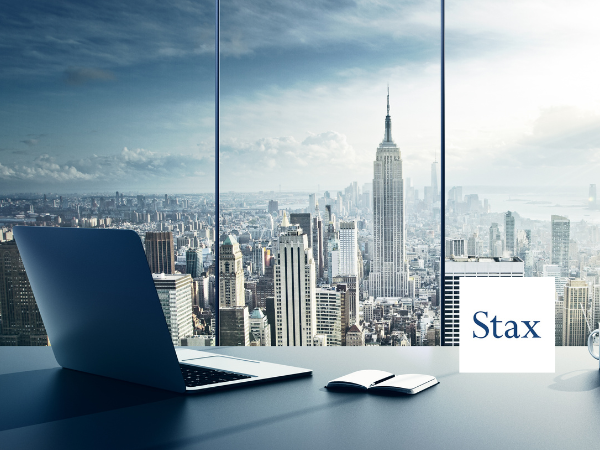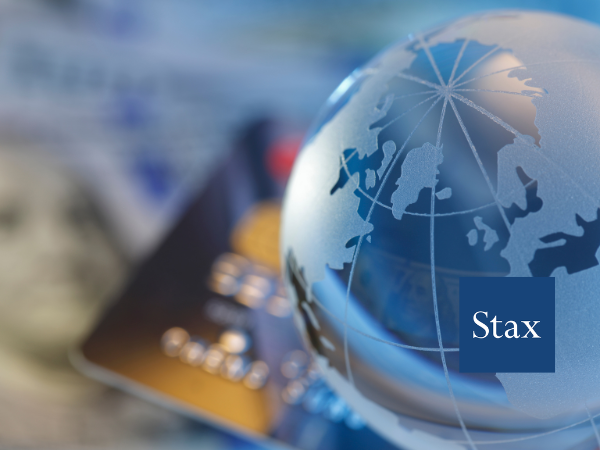Share
Where ESG Stands in 2025
Sustainability is under heavy fire in the US, where political battles risk obscuring ESG’s fundamental purpose. Meanwhile, in the EU, well-intentioned but overly complicated mandates risk burying real progress in paperwork. After a period of hype and confusion, it’s fair to wonder if ESG simply veered off course or if it’s on the brink of failure. However, the truth is more nuanced. Behind the headlines, forward-thinking organizations continue to embed ESG considerations into strategic planning, focusing on material risks and clear value creation. That’s where ESG should have been all along–pinpointing the intersection of risk, opportunity, and bottom-line impact.
Why the Future Still Looks Bright
If anything, 2025 offers a pivotal chance to recalibrate. The 10 trends below illustrate how meaningful ESG has become for climate adaptation, product innovation, circular economy initiatives, and more. Each trend highlights the transition from over-complication to genuine, strategic sustainability. Together, they form a roadmap to steer ESG back to its core value proposition: driving smarter decisions that benefit businesses, investors, and society. Let’s dive into what’s really happening and why it holds the key to a more resilient, opportunity-rich future.
1. Europe’s ESG Overreach Spurs Course Correction
In 2025, the EU’s “Competitiveness Compass” marks a welcome reversal of course and an opportunity to undo the tangled web of sustainability disclosures introduced by the overly complicated Corporate Sustainability Reporting Directive (CSRD). Initially lauded (by some) as a gold standard, the CSRD quickly proved unwieldy and disproportionately burdensome, especially for smaller businesses grappling with an avalanche of metrics. The resulting backlash made a course correction all but inevitable.
Now, officials aim to balance responsible corporate behavior with economic viability, acknowledging that too much regulation can choke innovation. Expect a shift toward streamlined ESG reporting in Europe, aligning more closely with financial materiality. If there’s a lesson here, it’s that sensible guardrails work and smothering mandates rarely do.
2. The Rebranding of ESG and DEI
As political scrutiny intensifies, companies are recalibrating how they talk about ESG and DEI without necessarily abandoning the work itself. The latest legal threats against major financial institutions over ESG commitments highlight a broader trend: in regions where sustainability and diversity efforts are under attack, organizations are shifting their messaging, reframing these initiatives in terms of risk management, financial resilience, and operational excellence. Meanwhile, as some firms scale back explicit DEI language, they continue efforts under new banners like “inclusive leadership” or “belonging.”
The takeaway? While ESG and DEI may be morphing in name, the underlying focus on workforce diversity, sustainable finance, and long-term value creation isn’t disappearing–it’s evolving to adapt to a new landscape. Expect companies to double down on substance while carefully navigating the rhetoric.
3. Bridging ESG Materiality and Strategic Risk Management
Materiality assessments have long centered on identifying pressing ESG issues, but 2025 sees a shift toward blending these exercises with enterprise risk management (ERM). Leading companies are no longer treating sustainability concerns like climate change or social impact as separate from macro-level threats such as regulatory upheaval or geopolitical tension.
Instead, they’re combining sustainability frameworks (e.g., GRI, SASB, TCFD, etc.) with ERM approaches to capture a more complete view of both immediate ESG priorities and longer-term strategic risks. By mapping topics like supply-chain vulnerabilities, tech disruption, and policy impacts onto the same materiality matrix, organizations can see where ESG concerns intersect with core strategic objectives.
The result? A truly integrated roadmap that keeps both risks and opportunities in clear focus.
4. Climate Adaptation Takes Center Stage
On May 29, 2024, the temperature in New Delhi soared to a staggering 52.3°C (126°F), highlighting the extent to which climate change has outpaced our ability to prevent it. While curbing emissions remains crucial, the reality is that climate impacts are already redefining business strategies and daily life. Historically cooler regions now grapple with unseasonable heat waves, driving up demand for HVAC systems and more resilient infrastructure. Insurance companies, confronted by floods, wildfires, and soaring claims, are restructuring their risk models, raising premiums or even withdrawing coverage in high-risk zones. In 2025, the conversation shifts decisively toward adaptation as a necessary complement to prevention, underscoring that resilience isn’t optional, but essential for survival.
5. Technological Diffusion Accelerates Sustainability
From AI-driven analytics to low-cost renewable energy solutions, breakthrough technologies are scaling faster than ever, reshaping how businesses achieve ESG objectives. While once pricey and/or niche, green innovations now follow an S-curve of adoption, jumping from early experimentation to widespread market use in record time. This rapid diffusion lowers barriers for smaller players to deploy impactful solutions, catalyzing more inclusive sustainability efforts across industries. As more corporate and government leaders begin to view technology not as a cost, but as a powerful driver of resilience and competitive advantage, expect to see more collaborations in 2025 that transform bold ideas into everyday reality.
6. Diversification in Sustainable Product Offerings
In 2025, more companies are expanding their product mix to accommodate diverse consumer preferences for sustainability, while also hedging their bets on emerging technologies. Toyota, for example, offers hybrids, EVs, plug-in hybrids, hydrogen fuel-cell models, and traditional ICE vehicles, allowing the market to dictate which solutions gain traction. This approach empowers consumers to select greener options that align with their lifestyles, while giving the automaker real-world data to refine and eventually retire models with waning demand. Though the R&D required to maintain such a broad portfolio can be substantial, it positions companies to stay agile in a rapidly shifting marketplace, proving that offering a range of sustainable choices serves both consumer needs and market relevance.
7. Rising Consumer Willingness to Pay for Sustainability
Even though eco-friendly products aren’t new, 2025 represents a pivotal moment in the market’s evolution. Companies are recognizing the significant “dry powder” consumers hold for genuine sustainable goods so long as quality and performance remain high. Much like generous tipping on small transactions, shoppers are signaling they’re ready to spend a bit more if it aligns with their values. As a result, businesses are set to broaden their portfolios of eco-conscious product offerings; confident in consumer demand justifying the added cost. In this new landscape, sustainability isn’t just a feel-good choice—it’s a proven market driver serving as a catalyst for profit and market share.
8. Mainstreaming the Circular Economy Through Molecular Recycling
Molecular recycling, a process of breaking down plastics into their original chemical building blocks, is changing the game within sustainable chemistry. Innovators like Eastman have demonstrated that turning single-use waste into high-quality feedstock is both feasible and profitable. However, innovation alone can’t complete the circle: supportive policy frameworks and shifts in consumer habits will be essential for larger-scale adoption. As governments look to incentivize advanced recycling infrastructure and consumers increasingly favor recycled-content products, molecular recycling is moving from lab experiments to real-world applications. In 2025, expect this approach to reduce plastic waste, underscoring that true circularity is closer than we once imagined.
9. Next-Generation Nuclear Gains Momentum
Advanced fission startups like Oklo are gaining traction worldwide as governments seek reliable, zero-carbon energy sources. Recent comments by the new US administration’s pick for Energy Secretary–emphasizing more nuclear and LNG–signal fresh federal backing for cutting-edge reactor designs. Meanwhile, Europe’s classification of nuclear within its green taxonomy has spurred renewed interest among industry players. Even in Asia, where rapid economic growth demands a robust power grid, small modular reactors (SMRs) offer a complementary solution to renewables, ensuring consistent baseload capacity. In 2025, expect more public-private partnerships, pilot projects, and regulatory support that elevate next-generation nuclear from a speculative option to a core decarbonization tool, filling gaps where wind and solar fall short.
10. Emergence of New Climate Technologies
From carbon capture to solar radiation management, geoengineering is moving from theoretical discussions to real-world experimentation in 2025. At its core, geoengineering involves deliberate interventions, like injecting particles into the atmosphere or altering ocean chemistry, to counter rising global temperatures. Proponents argue these methods could serve as a rapid response to escalating climate threats, potentially buying time to reduce emissions.
However, critics point to ethical, political, and ecological risks, including unintended consequences and the possibility that mitigation efforts might be deprioritized.
Going forward, expect increased funding for research and pilot programs, alongside growing calls for international frameworks to govern the deployment of these powerful yet controversial tools.
About Stax
Stax is a global management consulting firm serving corporate and private equity clients across a broad range of industries including software/technology, healthcare, business services, industrial, consumer/retail, and education. The firm partners with clients to provide data-driven, actionable insights designed to drive growth, enhance profits, increase value, and make better investment decisions.
Stax’s ESG & Impact Advisory Practice helps investors and businesses embed strategic ESG solutions that mitigate risk and drive long-term value. By integrating ESG and impact considerations throughout the investment lifecycle, the practice enables clients to unlock financial value through sustainability. In recognition of its work, Stax was named a finalist for Due Diligence Provider of the Year at the 2024 Real Deals ESG Awards.







